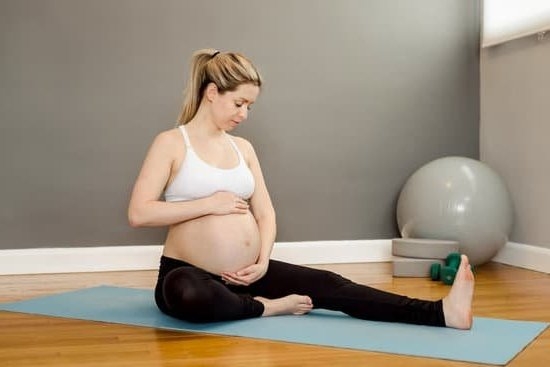A retroverted uterus, also known as a tilted or tipped uterus, is a condition in which the uterus is tilted backwards, towards the rectum, instead of forwards towards the bladder. This can sometimes lead to concerns and questions for expecting mothers who may be wondering how it can impact their pregnancy. In this article, we will explore the various aspects of retroverted uterus pregnancy, including symptoms, risks, diagnosis, and tips for a healthy pregnancy.
Understanding the anatomy and common causes of a retroverted uterus is crucial for expecting mothers. We will delve into the unique anatomy of a retroverted uterus and discuss some of the common underlying causes that contribute to this condition. By gaining a better understanding of its structure and origins, women can feel more informed and prepared during their pregnancy journey.
Recognizing the symptoms of a retroverted uterus during pregnancy is important for early detection and appropriate care. Expecting mothers need to know how to identify potential signs of discomfort or complications that may arise from having a retroverted uterus. By being informed about these symptoms, women can seek timely medical attention and ensure a safer pregnancy experience.
Symptoms of Retroverted Uterus During Pregnancy
During pregnancy, the symptoms of a retroverted uterus may become more noticeable as the growing baby puts pressure on the uterus and surrounding organs. It is important for expecting mothers to be aware of these symptoms in order to seek proper care and support. Here are some common signs to look out for:
- Back pain: Many women with a retroverted uterus experience increased lower back pain during pregnancy due to the position of the uterus.
- Difficulty urinating: The retroverted uterus can press against the bladder, leading to frequent urges to urinate or difficulty fully emptying the bladder.
- Pain during intercourse: Some women may experience discomfort or pain during sexual intercourse due to the position of the uterus.
It is important for pregnant women with a retroverted uterus to pay attention to these symptoms and communicate them with their healthcare provider. By recognizing these signs, they can receive appropriate guidance and management strategies.
In addition to these symptoms, some women with a retroverted uterus may also experience constipation or abdominal discomfort during pregnancy. These issues can often be managed through lifestyle adjustments and proper medical care. By being aware of these potential symptoms, expectant mothers can take proactive steps to ensure a healthy and comfortable pregnancy despite having a retroverted uterus.
Risks and Complications
A retroverted uterus during pregnancy can pose some risks and potential complications for expectant mothers. Understanding these issues and learning how to manage them is crucial for ensuring a healthy and safe pregnancy.
Potential Risks
One potential risk of having a retroverted uterus during pregnancy is an increased likelihood of experiencing urinary tract infections (UTIs). The position of the uterus can put additional pressure on the bladder, leading to difficulties fully emptying it and potentially causing stagnant urine that increases the risk of infection. Additionally, women with a retroverted uterus may also be at a higher risk for miscarriage or preterm labor, although more research is needed to fully understand this correlation.
Managing Complications
To manage potential complications associated with a retroverted uterus during pregnancy, it’s important for expectant mothers to communicate openly with their healthcare provider. Regular prenatal check-ups are essential for monitoring the health of both the mother and the baby.
In some cases, a healthcare provider may recommend physical therapy, exercises, or specific positions to help alleviate discomfort associated with a retroverted uterus. It’s also important to follow any recommended lifestyle changes or treatment plans to reduce the risk of complications.
Maintaining Open Communication
Expectant mothers with a retroverted uterus should feel empowered to ask their healthcare provider any questions they may have and raise any concerns about potential complications. Open communication can help ensure that any issues are promptly addressed and managed effectively. By staying informed and actively participating in their prenatal care, women can work together with their healthcare provider to reduce the likelihood of complications related to a retroverted uterus pregnancy.
Diagnosis and Treatment
A retroverted uterus, also known as a tilted or tipped uterus, occurs when the uterus is angled towards the back of the pelvis rather than the front. It is a common anatomical variation that typically doesn’t cause any problems. However, during pregnancy, a retroverted uterus may pose some challenges.
Diagnosis of a retroverted uterus during pregnancy can be done through routine prenatal examinations. Your healthcare provider will be able to feel the position of your uterus during a pelvic exam. Additionally, an ultrasound may be performed to confirm the diagnosis and rule out any other potential issues.
Fortunately, having a retroverted uterus during pregnancy does not necessarily mean that you will encounter complications. In most cases, there is no need for any specific treatment or intervention. However, in rare instances where the retroverted uterus causes severe pain or difficulty with labor and delivery, your healthcare provider may discuss options with you. These may include exercises to help reposition the uterus or manual repositioning if necessary.
In addition to medical interventions, there are also lifestyle adjustments that can be made to help manage and alleviate discomfort associated with a retroverted uterus during pregnancy. Engaging in regular exercise can help strengthen the pelvic floor muscles and provide support for the tilted uterus.
It is important to maintain good posture and avoid activities that put excessive pressure on the pelvis. Seeking regular prenatal care and staying informed about your condition are crucial aspects of managing a pregnancy with a retroverted uterus.
- Regular prenatal exams to monitor the position of the uterus
- Ultrasound to confirm diagnosis and rule out complications
- Lifestyle adjustments such as exercise and posture management
Tips for a Healthy Pregnancy With a Retroverted Uterus
Staying Active
Expecting mothers with a retroverted uterus can benefit from low-impact exercises such as walking, swimming, and prenatal yoga. These activities help strengthen the pelvic muscles and provide support to the uterus during pregnancy. It is essential to consult with a healthcare provider before starting any exercise routine to ensure that it is safe for both the mother and the baby.
Regular Prenatal Check-Ups
Regular prenatal check-ups are crucial for monitoring the progress of the pregnancy, especially for women with a retroverted uterus. It is important to keep an open line of communication with the healthcare provider and report any unusual symptoms or discomfort. This will enable early detection of any potential complications and allow for timely intervention if necessary.
Supportive Clothing and Accessories
Wearing supportive clothing and accessories can alleviate some of the discomfort associated with a retroverted uterus during pregnancy. Maternity belts or bands can provide additional support to the abdomen, relieving pressure on the back and pelvis. Additionally, wearing comfortable and supportive footwear can help minimize discomfort while standing or walking, especially as the pregnancy progresses.
Overall, maintaining a healthy lifestyle, staying informed about the condition, and following medical advice are essential for a smooth pregnancy experience with a retroverted uterus. With proper care and attention, expecting mothers can navigate through this unique journey successfully.
Positions for Comfort
A retroverted uterus, also known as a tilted or backward uterus, is a condition in which the uterus tilts towards the back of the pelvis rather than the front. This anatomical variation is actually quite common and usually does not cause any problems. However, during pregnancy, it can sometimes lead to discomfort and require some adjustments in sleeping and resting positions for comfort and safety.
When it comes to finding the best sleeping and resting positions for comfort with a retroverted uterus during pregnancy, there are a few key tips to keep in mind. Firstly, lying on your side can often be more comfortable than lying flat on your back. Placing a pillow between your knees and another under your abdomen can help relieve pressure on your lower back and make side-sleeping more comfortable.
It’s also important to pay attention to how you get up from lying down or sitting position. When getting up from lying down, roll onto your side first before using your arms to push yourself up into a sitting position. This can help reduce strain on the ligaments supporting your uterus and avoid any discomfort that may arise from sudden movements.
Another useful tip is to consider investing in a pregnancy pillow. These special pillows are designed to provide support for your growing belly and help you find more comfortable sleeping positions throughout all stages of pregnancy.
| Best Sleeping Positions | Comfort Tips |
|---|---|
| Lying on side with pillows between knees and under abdomen | Relieves pressure on lower back |
| Rolling onto side before getting up | Reduces strain on ligaments supporting the uterus |
| Using a pregnancy pillow | Provides support for growing belly |
Labor and Delivery Considerations
When it comes to childbirth, having a retroverted uterus may impact the process in various ways. It’s important for expecting mothers with this condition to understand how it might affect labor and delivery.
One potential issue is that a retroverted uterus can take longer to straighten out as the baby grows, which can contribute to back pain during pregnancy and potentially affect the position of the baby as it prepares for birth. In some cases, this positioning issue may necessitate a cesarean section rather than a vaginal delivery.
Additionally, women with a retroverted uterus may experience difficulties during labor due to the position of their uterus. The pressure from contractions may cause more intense back pain or discomfort compared to women with a normal uterine position. This discomfort can make labor more challenging and may require different pain management techniques.
It’s also important for healthcare providers to be aware of the presence of a retroverted uterus when preparing for delivery. Understanding the potential challenges associated with this condition can help them provide better support and care for mothers during childbirth. From monitoring labor progress closely to making adjustments in positions for pushing, medical professionals can help ensure that labor and delivery are as safe and smooth as possible for women with a retroverted uterus.
Postpartum Care
In conclusion, while pregnancy with a retroverted uterus may pose some challenges, it is important to remember that it is entirely possible to have a healthy and successful pregnancy. Understanding the anatomy and common causes of a retroverted uterus can help expecting mothers recognize the symptoms and seek appropriate care. It is crucial to be aware of the potential risks and complications associated with this condition during pregnancy, as well as how they can be managed.
Diagnosis and treatment play a key role in ensuring the well-being of both mother and baby throughout the pregnancy. Seeking regular prenatal care and following the advice of healthcare professionals can help minimize any potential issues. Additionally, there are practical tips for maintaining a healthy pregnancy with a retroverted uterus, such as practicing good posture and engaging in pelvic floor exercises.
After childbirth, postpartum care becomes important for addressing any lingering concerns or potential issues that may arise. It is essential for women with a retroverted uterus to continue seeking guidance from their healthcare providers during this period. By staying informed and proactive, women can ensure a smooth postpartum recovery and overall well-being for themselves and their newborns. With proper care and attention, it is indeed possible to navigate pregnancy, childbirth, and postpartum with a retroverted uterus successfully.

Welcome to my fertility blog. This is a space where I will be sharing my experiences as I navigate through the world of fertility treatments, as well as provide information and resources about fertility and pregnancy.





